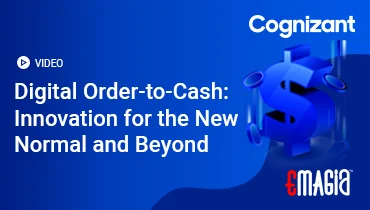In the rapidly evolving world of corporate finance, cash is not just an asset—it’s the lifeblood of the business. The ability to manage cash flow effectively determines a company’s stability, growth potential, and strategic agility. For decades, cash management has been a labor-intensive, reactive process, relying on manual data entry, endless spreadsheets, and backward-looking reports. This traditional approach, however, is no longer sufficient in an era of unprecedented speed and complexity. The future of financial operations is here, and it is defined by autonomous finance solutions for cash management.
Autonomous finance represents a paradigm shift from simple automation to intelligent, self-driving financial processes. By leveraging cutting-edge technologies like artificial intelligence (AI) and machine learning (ML), these solutions can predict, automate, and optimize cash-related activities with minimal human intervention. They move the finance function from a historical record-keeper to a strategic, forward-looking partner. This is not merely about making existing processes faster; it’s about fundamentally transforming how businesses interact with their financial data to achieve unprecedented levels of accuracy, efficiency, and insight.
This comprehensive guide will delve deep into the world of autonomous finance solutions for cash management. We will explore the core components that make these systems so powerful, detail the substantial benefits they offer, and provide a practical roadmap for implementing them successfully. For any business aiming to secure a competitive edge and ensure long-term financial health, understanding and adopting these solutions is no longer a matter of choice—it’s an urgent strategic imperative.
The Digital Transformation of Cash Management
Traditional cash management is fraught with inefficiencies and a lack of real-time visibility. Financial professionals often spend a significant portion of their time on manual tasks such as bank reconciliation, data entry, and report generation. This leaves little time for strategic analysis or proactive decision-making. The reliance on static, after-the-fact reports means that by the time an issue is identified, it may be too late to take effective action. The disconnect between disparate systems, like ERPs, bank portals, and treasury management platforms, creates data silos that hinder a single, unified view of a company’s financial position.
Autonomous finance solutions break down these barriers by creating a living, dynamic model of a company’s cash flow. They connect and harmonize data from all sources, providing a single, real-time dashboard that reflects the true liquidity position. This is a radical departure from the traditional model, which often required a complex and time-consuming consolidation process at the end of each day or week. By automating the data flow and reconciliation, these solutions provide a foundation of accurate and timely information, empowering finance teams to shift their focus from tactical operations to strategic analysis. They are the engine behind a more agile and responsive financial function.
The transition from a reactive to a proactive model is one of the most significant benefits. Instead of waiting for a liquidity crisis to happen, autonomous systems can predict it days or even weeks in advance, providing the foresight needed to take corrective action. This predictive capability is a game-changer, allowing businesses to optimize their working capital, manage risk more effectively, and seize new opportunities as they arise. It turns a business’s cash flow from a point of stress into a source of strategic advantage.
Core Components of Autonomous Finance for Cash Flow
The power of autonomous finance is found in its integrated components, each designed to solve a specific challenge in cash management. These intelligent modules work in concert to create a fully optimized and self-driving financial ecosystem. Understanding these components is key to grasping the full scope of their potential.
The first core component is AI-driven cash forecasting. Unlike traditional forecasting methods that rely on simple historical averages, AI models analyze thousands of data points—from past payment behavior and sales trends to macroeconomic indicators and weather patterns. They can identify subtle correlations and patterns that are invisible to the human eye, providing a forecast with a level of accuracy never before possible. This is the foundation upon which all other autonomous functions are built. It provides the “eyes” for the system, allowing it to see into the future of cash flow.
Another crucial component is automated reconciliation and exception management. This is where the manual work of cash management is truly eliminated. AI can automatically match incoming payments to open invoices, even with partial or incorrect information. When a transaction can’t be matched, the system flags it as an exception and routes it to the appropriate person with all the necessary details to resolve it quickly. This dramatically reduces the time spent on a tedious and error-prone task, allowing finance professionals to focus on higher-value activities. The system learns from each resolved exception, becoming smarter and more efficient over time.
Finally, intelligent working capital optimization and risk management are what truly elevate these solutions. The system can autonomously identify opportunities to optimize cash on hand, such as recommending which invoices to pay early to earn a discount or when to extend payment terms. It can also act as a proactive risk monitor, flagging unusual transaction patterns, potential fraud, or customers who are likely to default on their payments. By providing a real-time risk score for each customer and transaction, the system empowers finance teams to make informed decisions that protect the bottom line and ensure the long-term stability of the business. These are not just tools; they are strategic partners.
Key Advantages of Implementing AI-Powered Cash Flow Solutions
The benefits of adopting autonomous finance solutions are far-reaching, impacting not just the finance department but the entire organization. From a financial perspective, the most obvious advantage is the significant improvement in cash flow. By optimizing working capital and accelerating cash conversion, these solutions provide a direct and measurable boost to liquidity. This is particularly valuable for businesses with complex or seasonal cash flow patterns. With a clear, predictive view of their cash position, they can make better-informed decisions about investments, debt, and expansion.
Beyond the financial gains, the operational advantages are equally compelling. The elimination of manual, repetitive tasks frees up finance professionals to focus on strategic analysis and high-value projects. This shifts the role of the finance team from a reactive, administrative function to a proactive, strategic one. It allows for a greater focus on building relationships with customers, analyzing market trends, and driving business growth. This is a fundamental change that enhances job satisfaction and positions the finance team as a key partner in the organization’s success. It’s an investment in people as much as it is in technology.
Finally, autonomous finance solutions provide an unprecedented level of control and risk mitigation. The real-time visibility and predictive analytics empower finance leaders to see potential issues before they become crises. They can identify late-paying customers, anticipate supply chain disruptions, and detect fraudulent activity with a level of speed and accuracy that is impossible with manual processes. This proactive approach to risk management protects the business from unforeseen shocks and provides a stable foundation for growth. It gives leadership the confidence to make bold decisions, knowing that they have a clear and accurate picture of the company’s financial health at all times.
A Strategic Roadmap for Adopting Autonomous Finance
The journey to autonomous finance is a strategic one that requires careful planning and a phased approach. It’s not about a simple software installation, but a change in how a business operates. Following a clear roadmap can ensure a smooth transition and maximize the return on investment. The process begins with a thorough assessment of your current financial operations and an understanding of your specific pain points and goals.
The first phase involves data integration and a pilot program. It is critical to connect all relevant data sources, including ERP systems, banking portals, and payment gateways. The quality of your data will directly impact the performance of the AI models, so this step is non-negotiable. Once the data is integrated, start with a pilot program in a limited area, such as a specific business unit or a segment of your customer base. This allows you to test the solution, train the AI models, and work out any kinks without disrupting your entire financial operation. It’s a low-risk way to prove the value and build internal buy-in.
Once the pilot is successful, you can move to full-scale deployment and continuous improvement. Roll out the solution across the organization, providing comprehensive training and support to your finance team. This is a crucial step for managing change and ensuring user adoption. Once the system is live, the work is not over. The true power of autonomous finance is its ability to continuously learn and improve. Regularly monitor the system’s performance, provide feedback, and refine the models to ensure they remain accurate and effective. This ongoing process of refinement is what will unlock the full potential of your investment over the long term, making your financial operations smarter and more efficient with each passing day.
Empowering Your Financial Teams with Emagia’s AI-Driven Solutions
Transitioning to a fully autonomous finance model can seem like a monumental task, but with the right technology partner, it becomes a streamlined and rewarding journey. Emagia’s AI-driven platform is specifically designed to transform the cash management function from a reactive, labor-intensive process into a strategic, proactive powerhouse. The platform’s intelligent automation, predictive analytics, and real-time dashboards are built to meet the unique challenges of modern finance, providing a clear and actionable path to financial autonomy.
Emagia’s solution goes beyond simple automation. It leverages a deep understanding of financial data to provide accurate cash flow forecasts, automate complex reconciliation tasks, and deliver actionable insights that improve liquidity and reduce risk. The platform integrates seamlessly with existing ERP and accounting systems, ensuring that your team has a single, unified view of your financial health at all times. It empowers finance professionals to move away from mundane, repetitive tasks and focus on what truly matters: strategic planning, risk management, and driving business growth. Emagia is not just a tool; it’s a strategic partner that helps you unlock the full potential of your financial data and turn your finance function into a competitive advantage.
The implementation of Emagia’s platform is designed to be a smooth and efficient process. From initial data integration to full-scale deployment, the platform provides a clear roadmap and dedicated support to ensure a successful transition. By choosing a solution that is built on a foundation of intelligent automation and predictive analytics, businesses can confidently embrace the future of finance and achieve unprecedented levels of efficiency, accuracy, and insight. Emagia is the catalyst for a smarter, more agile, and more profitable financial operation.
Frequently Asked Questions on Autonomous Finance
What is autonomous finance?
Autonomous finance refers to the use of artificial intelligence and machine learning to automate, predict, and optimize financial processes with minimal human intervention. It goes beyond basic automation by using intelligent systems to make decisions, detect anomalies, and provide foresight into financial operations.
How does AI help in cash management?
AI helps in cash management by providing highly accurate cash flow forecasts, automating the tedious process of bank reconciliation, and intelligently optimizing working capital. It can analyze large datasets to identify hidden patterns and risks, empowering finance teams to be more proactive and strategic.
Is autonomous finance a replacement for the finance team?
No, autonomous finance is not a replacement for the finance team. It is a powerful tool that automates repetitive, low-value tasks, freeing up finance professionals to focus on strategic analysis, complex problem-solving, and providing high-value insights to the business. It enhances the capabilities of the finance team rather than replacing it.
What are the security implications of autonomous finance?
Security is a critical component of autonomous finance solutions. Reputable platforms are built with robust security protocols, including data encryption, access controls, and continuous monitoring. The use of AI can also enhance security by proactively detecting and flagging fraudulent transactions or suspicious activity in real-time.
How long does it take to implement a solution?
The implementation timeline for an autonomous finance solution varies depending on the complexity of a company’s existing systems and the scope of the project. A phased approach, starting with a pilot program, can take several months. A full-scale deployment and integration can take anywhere from a few months to over a year, with a focus on continuous refinement.



